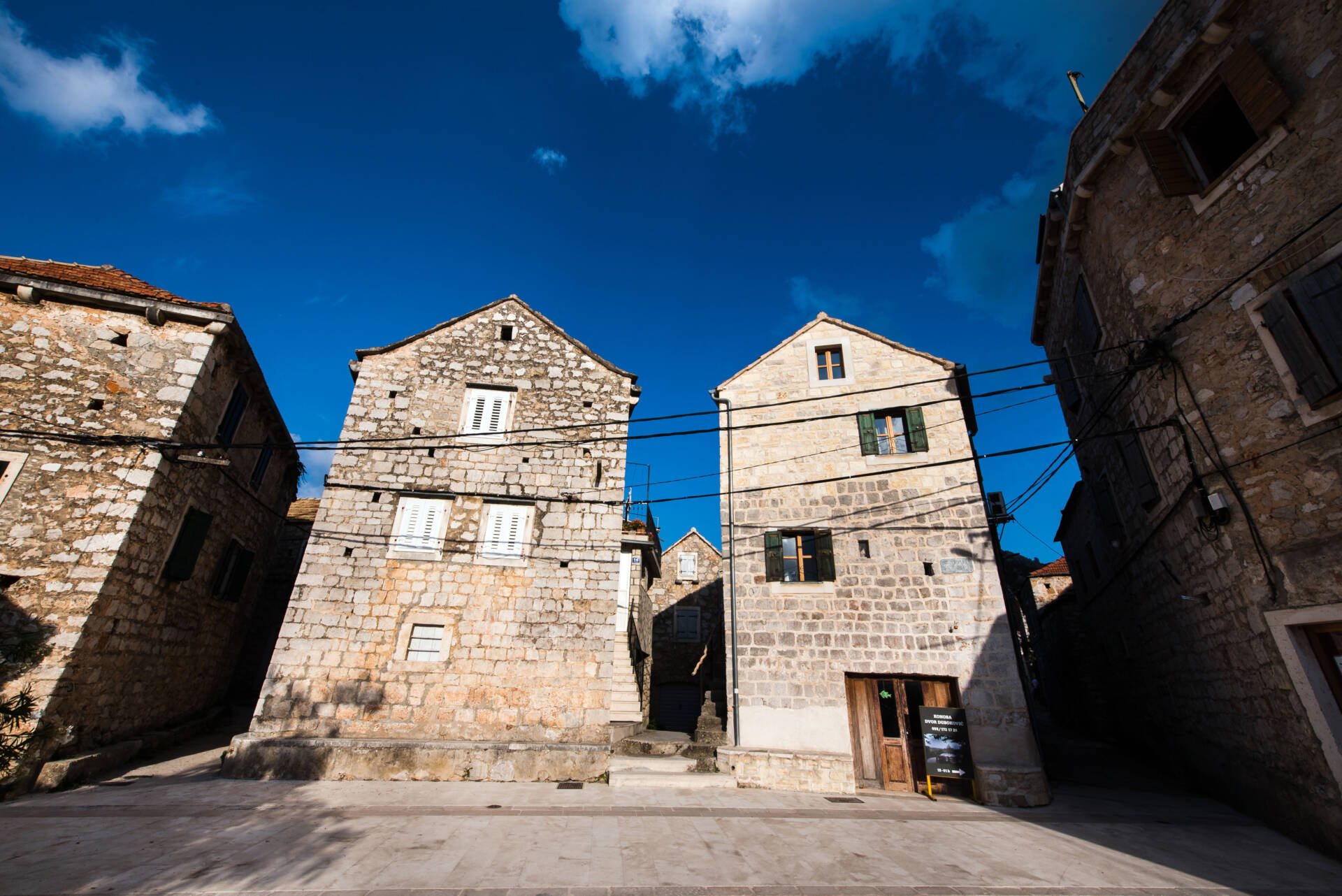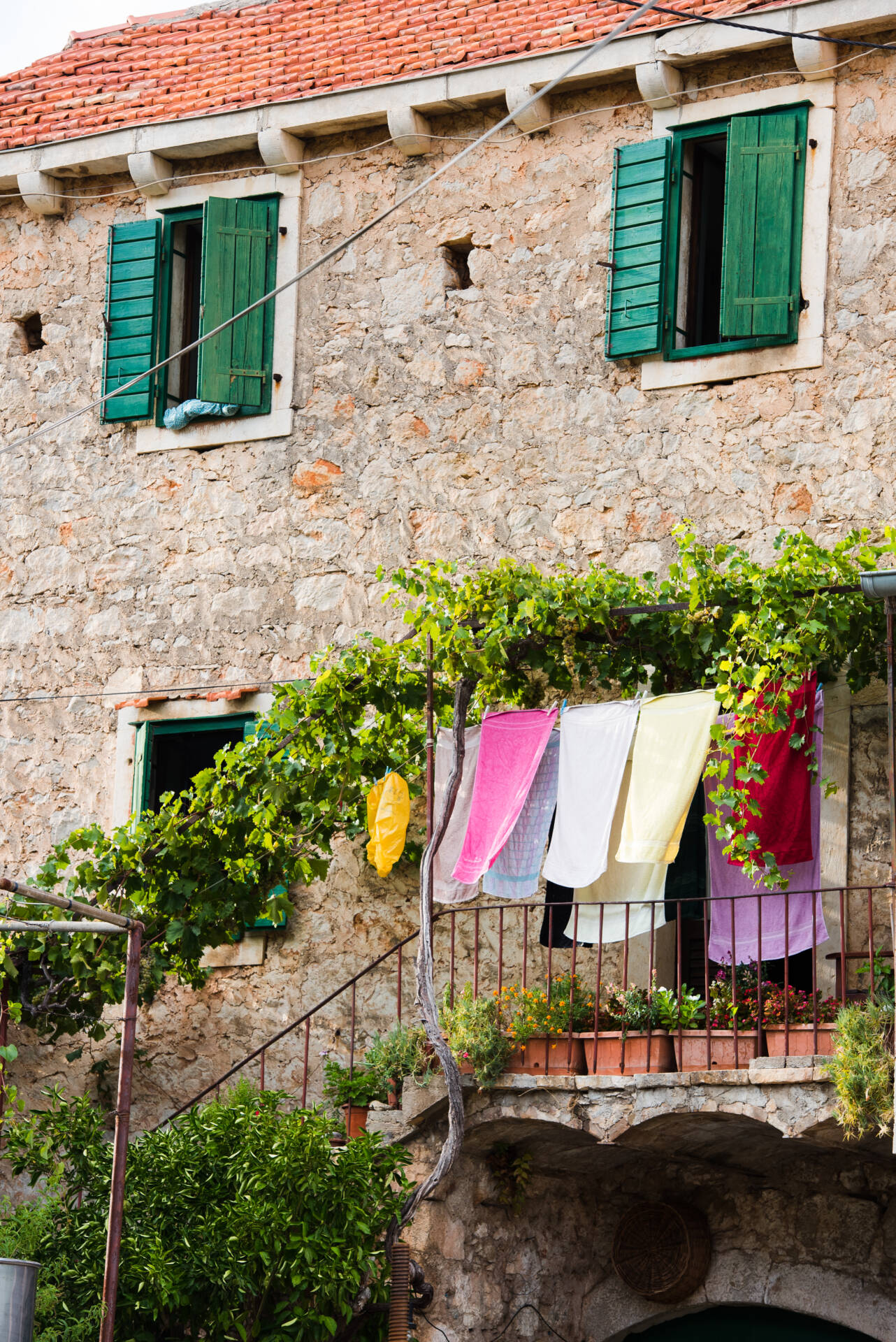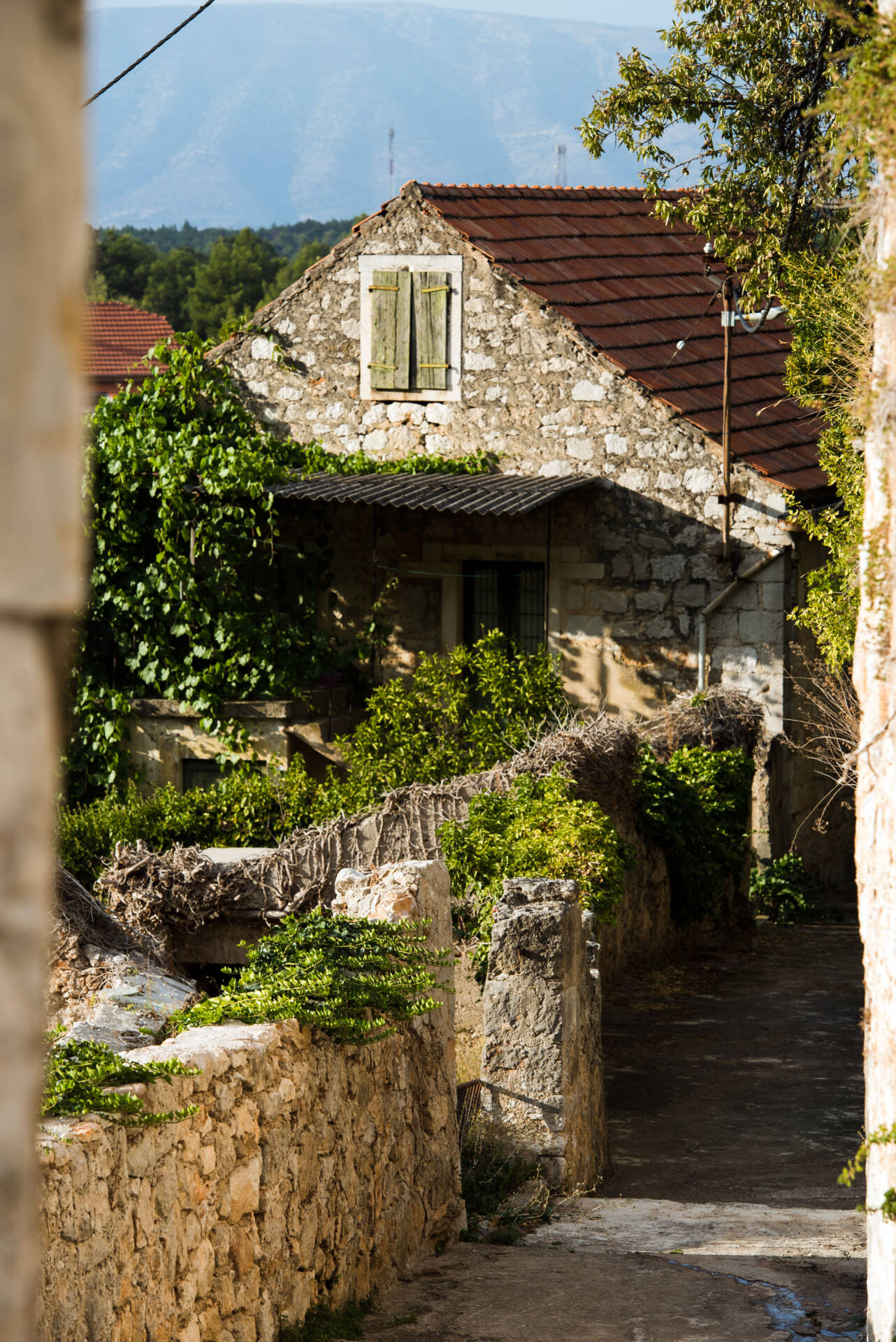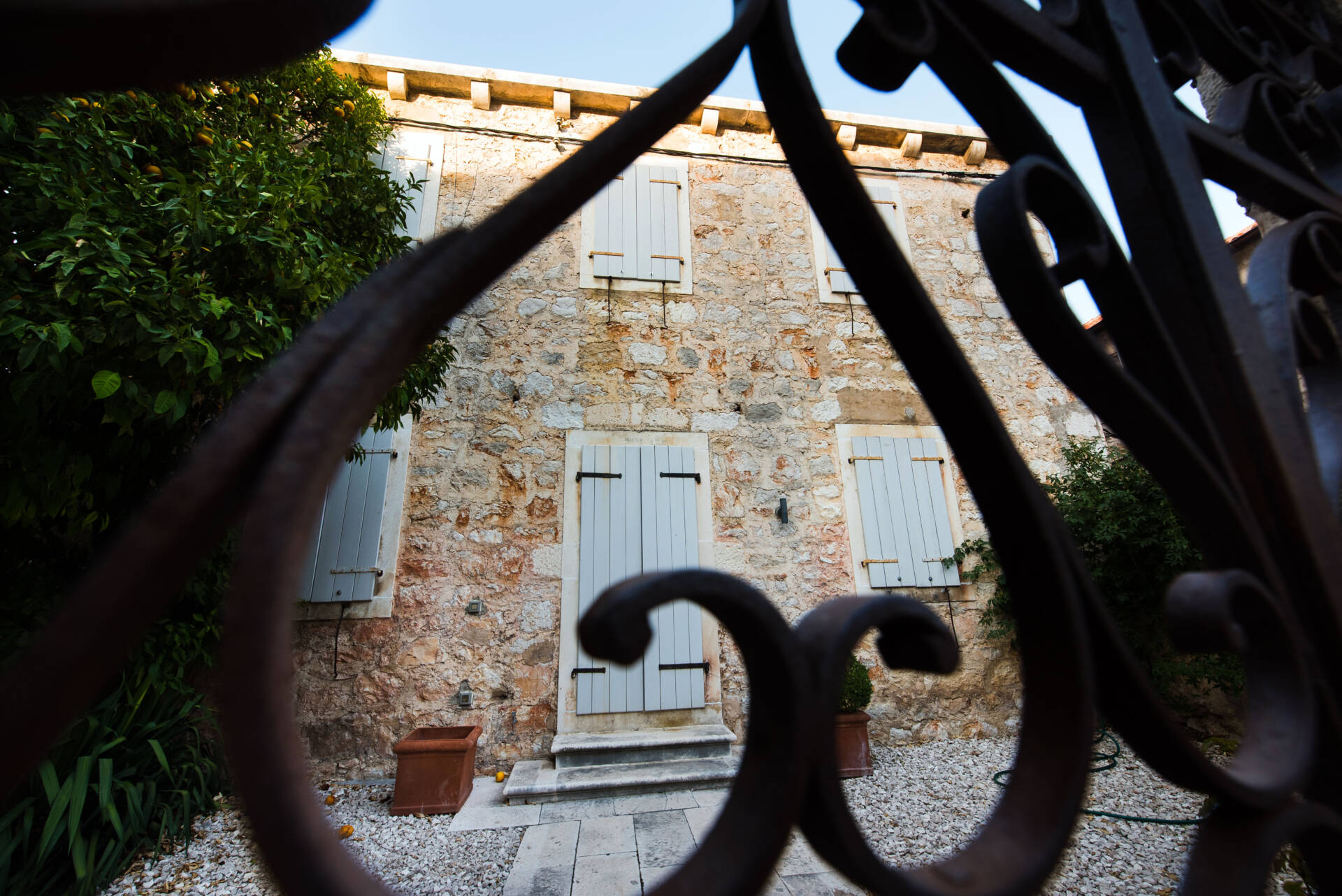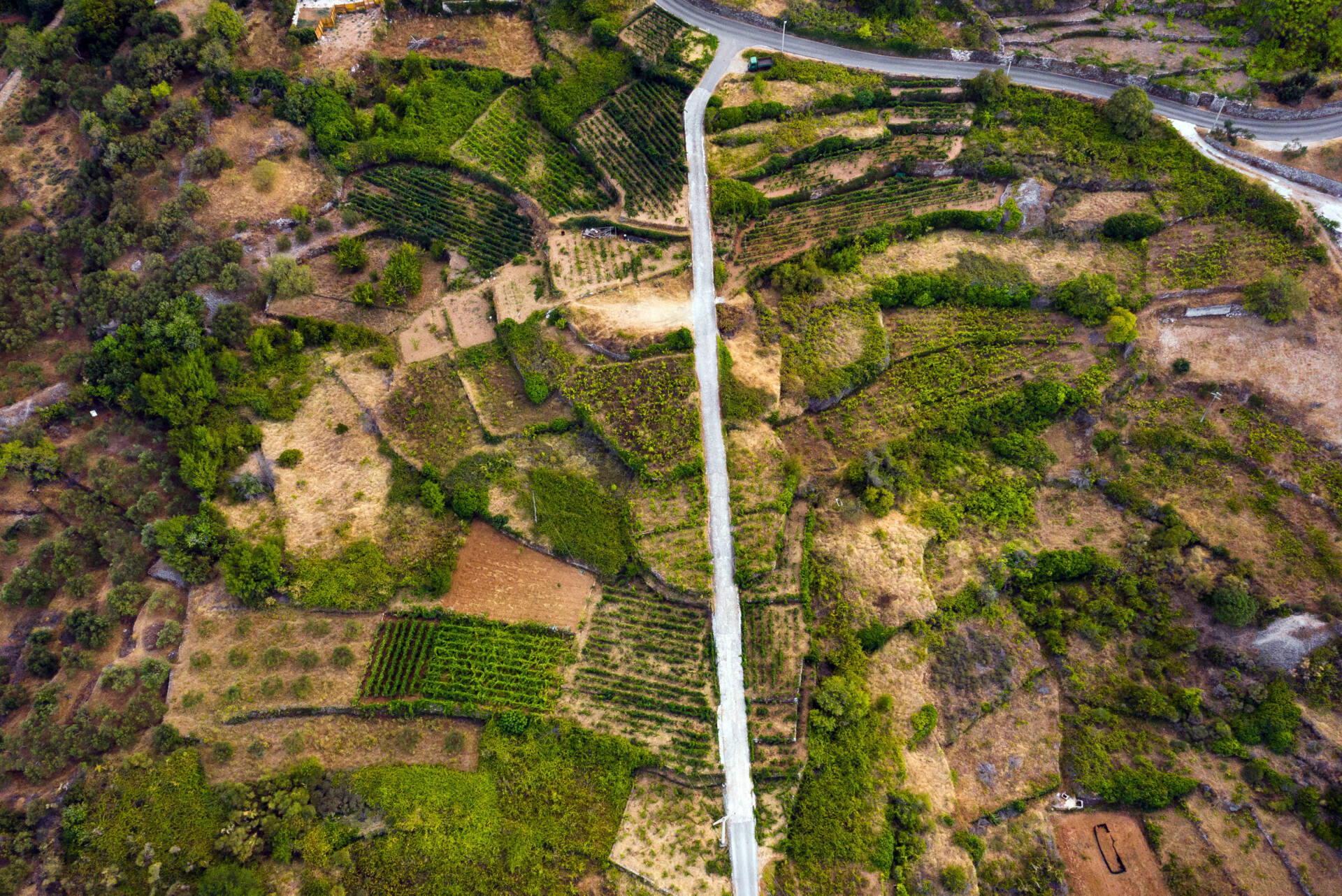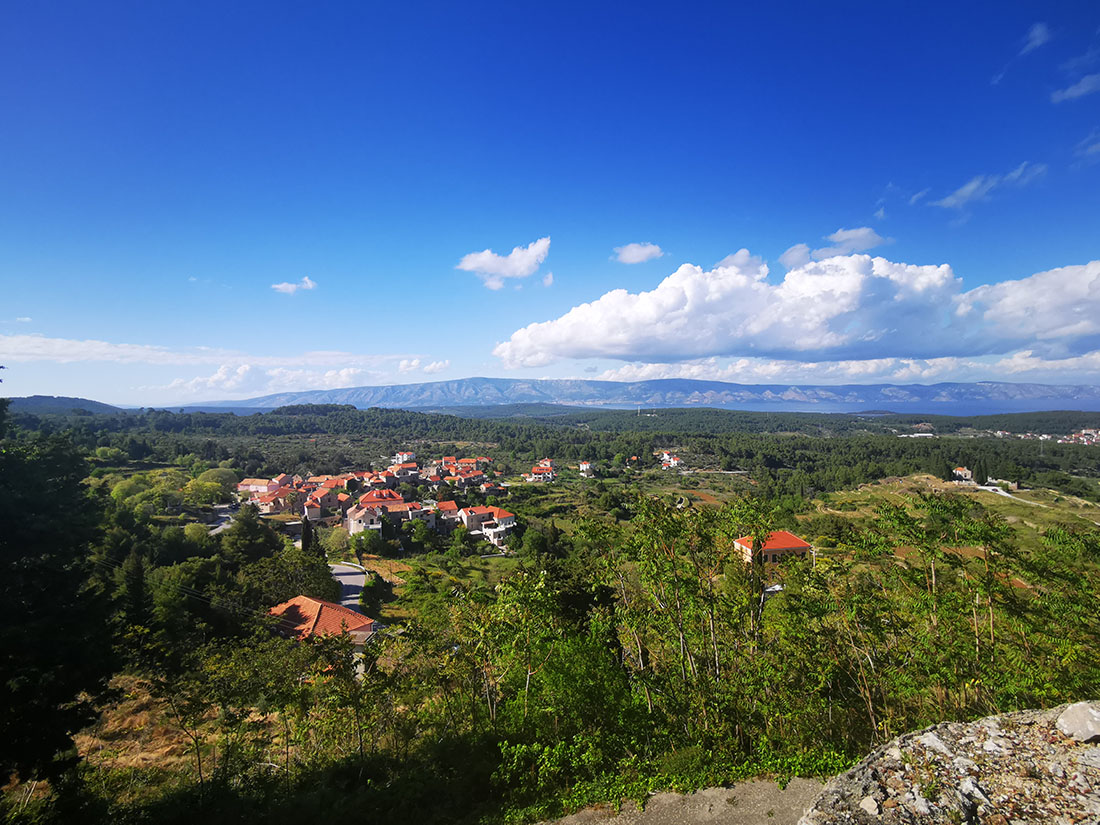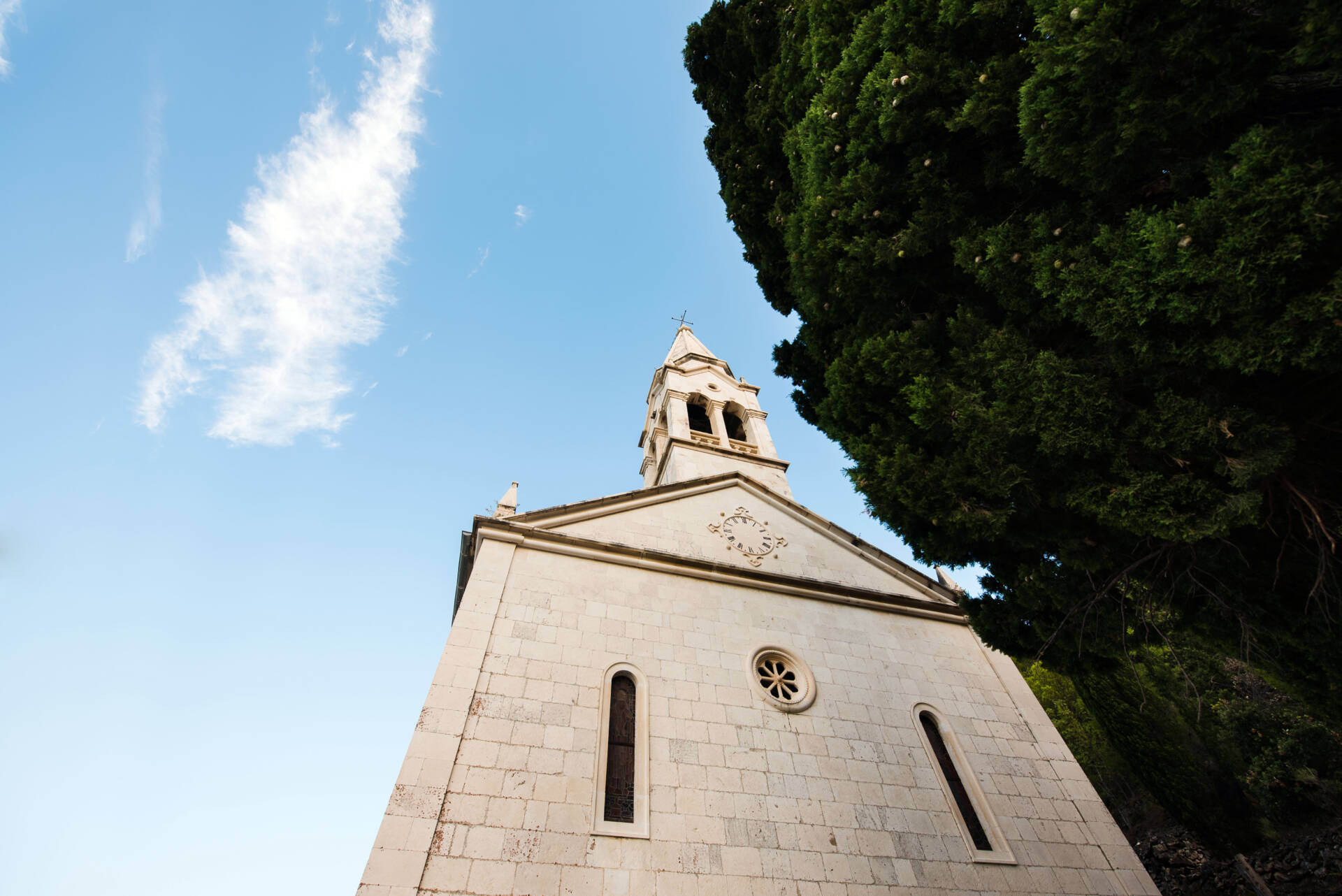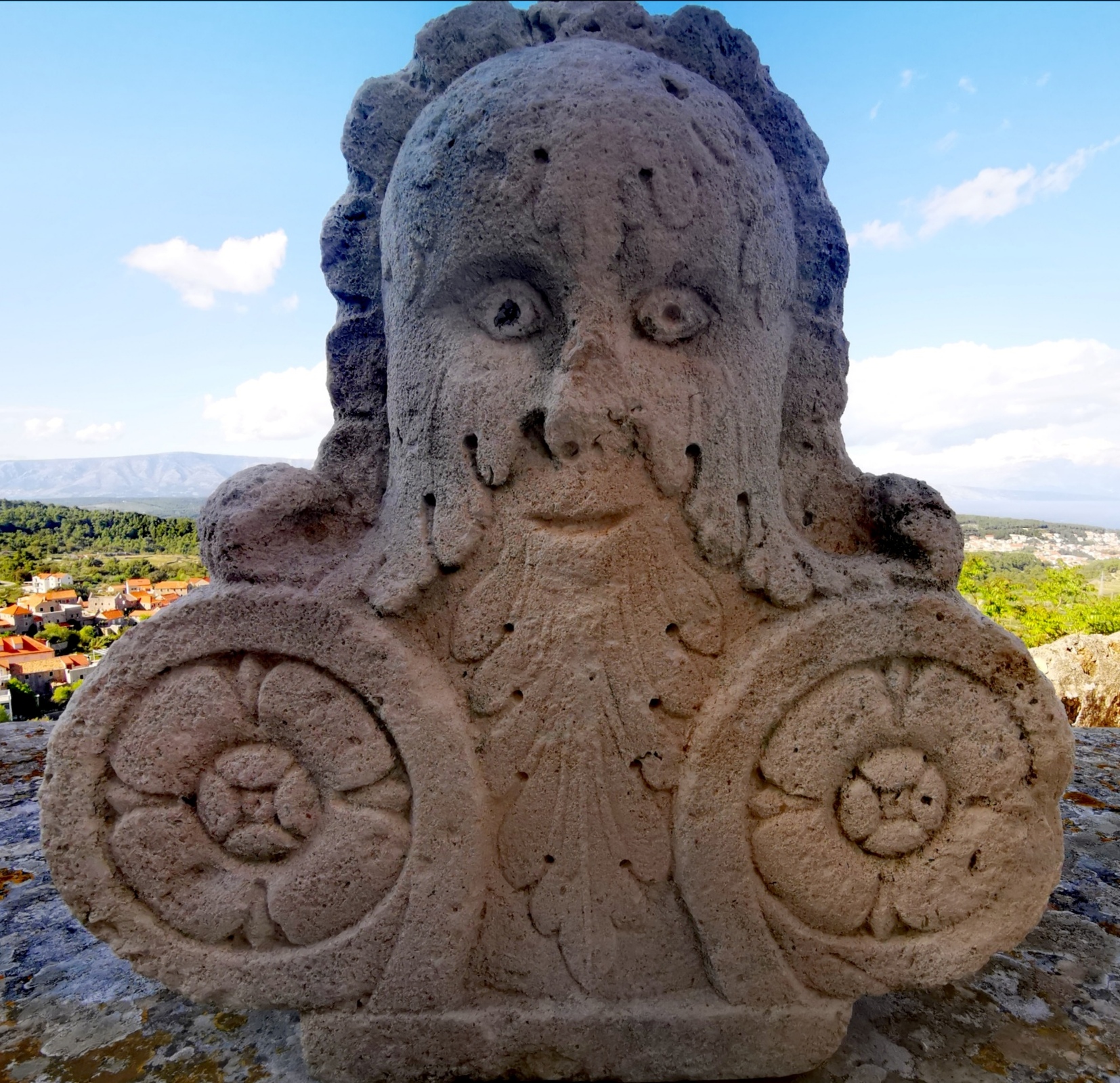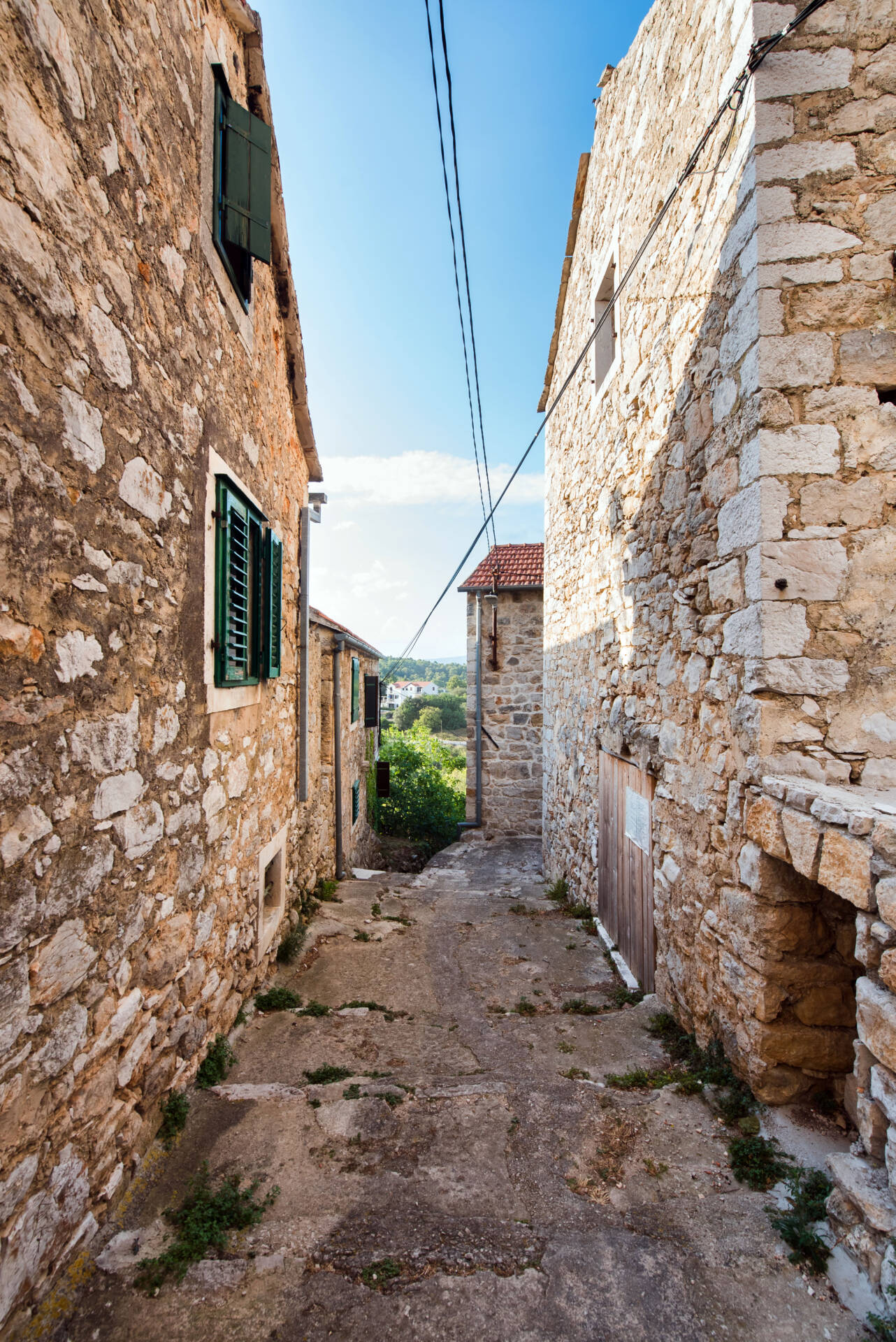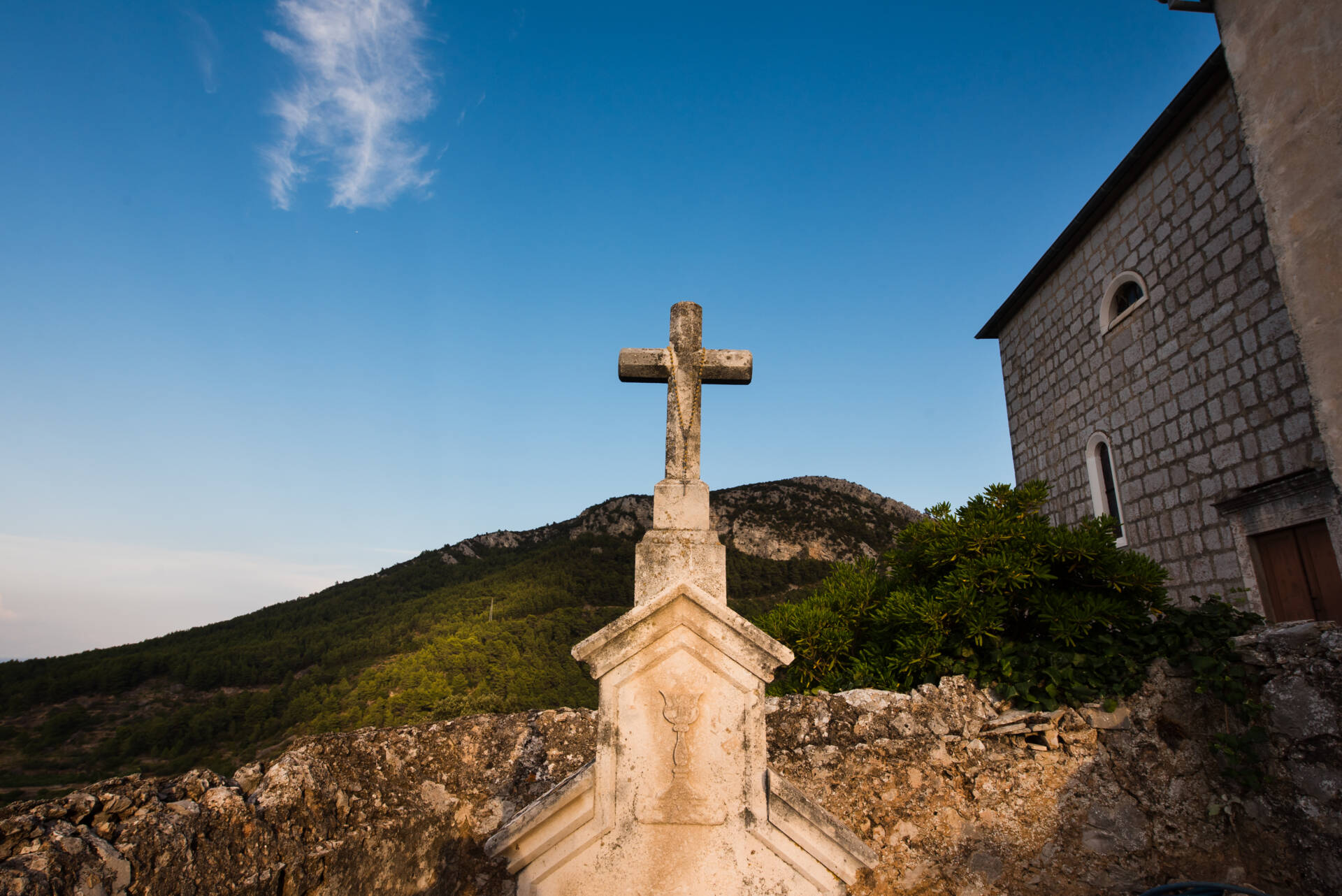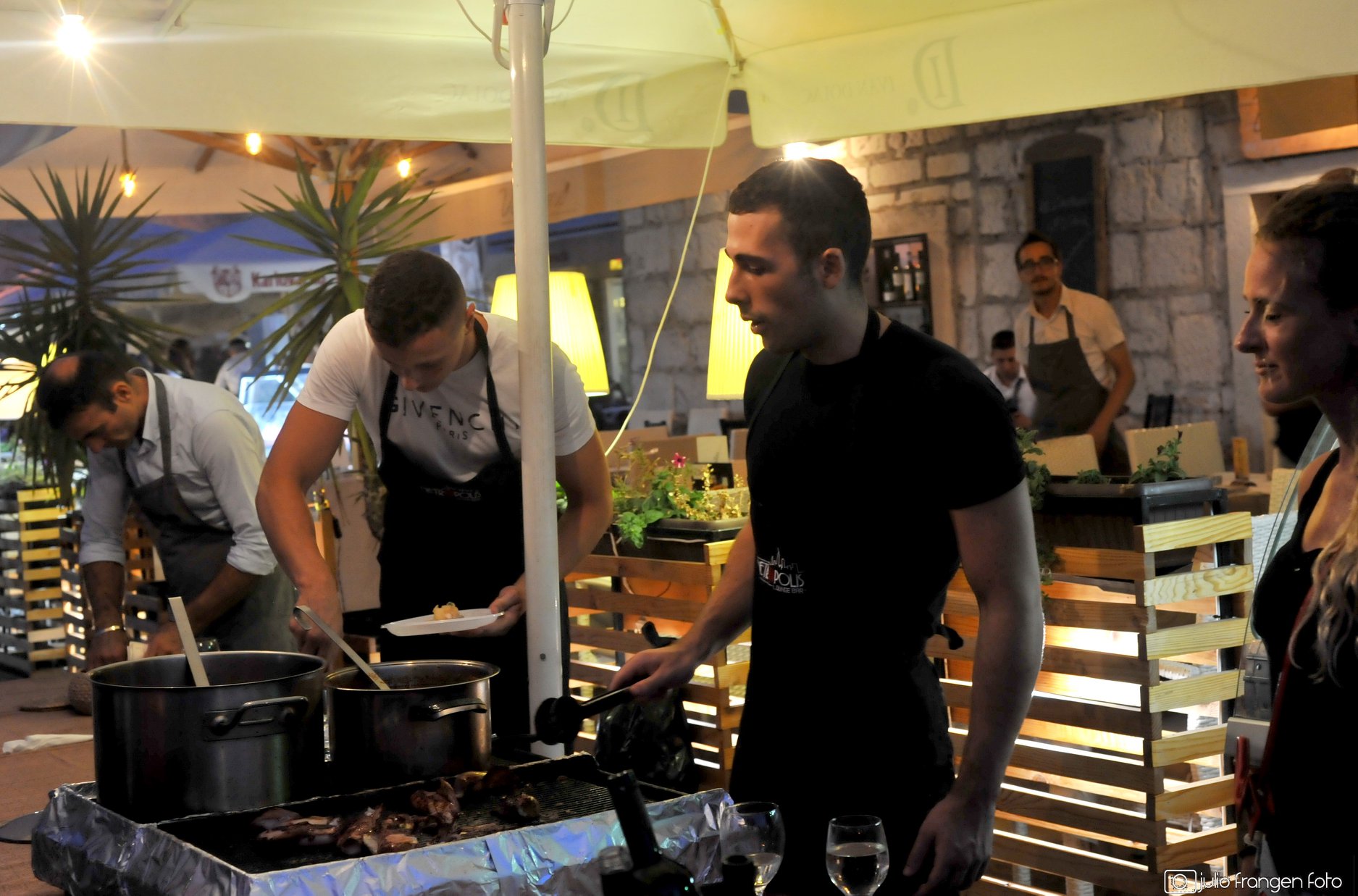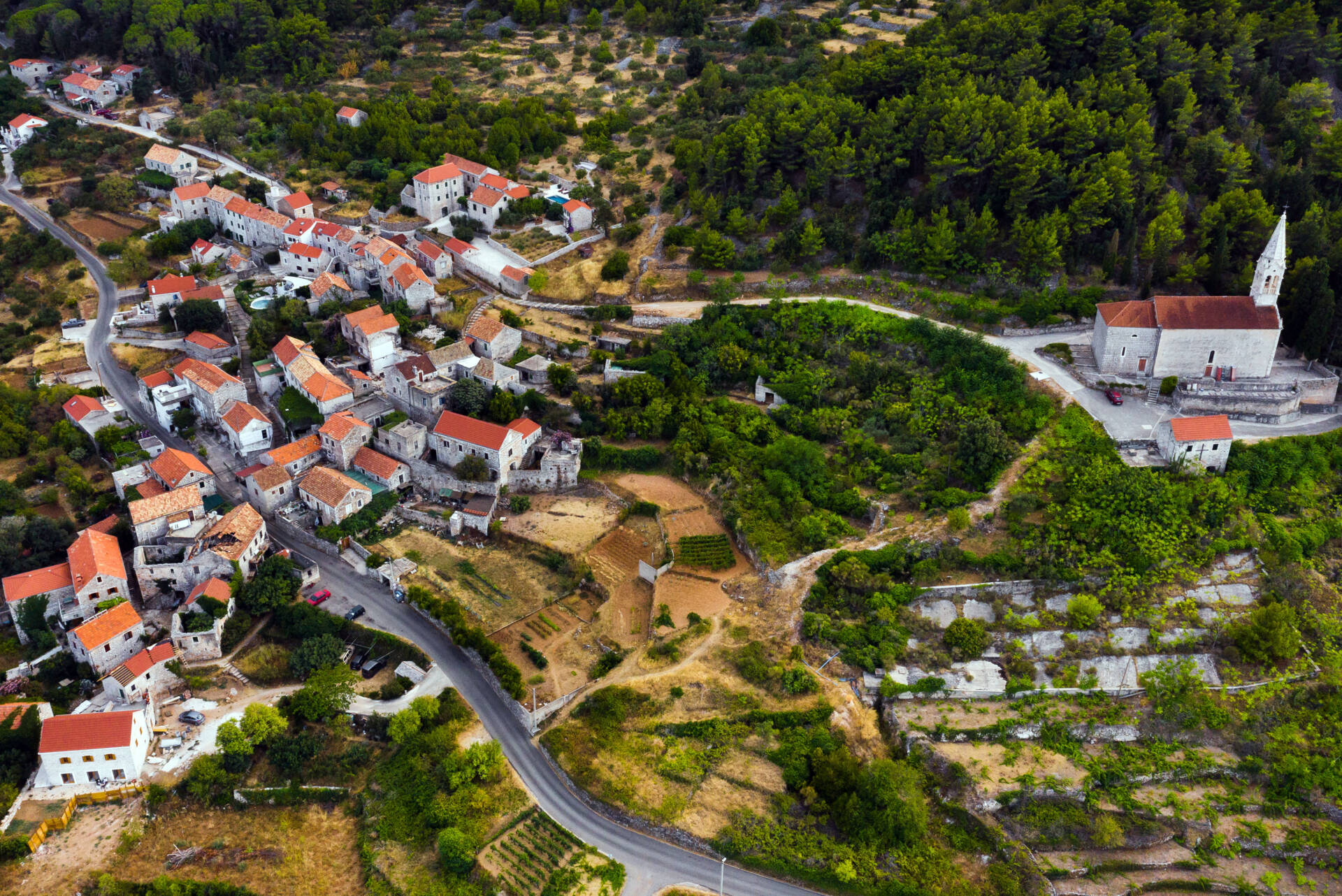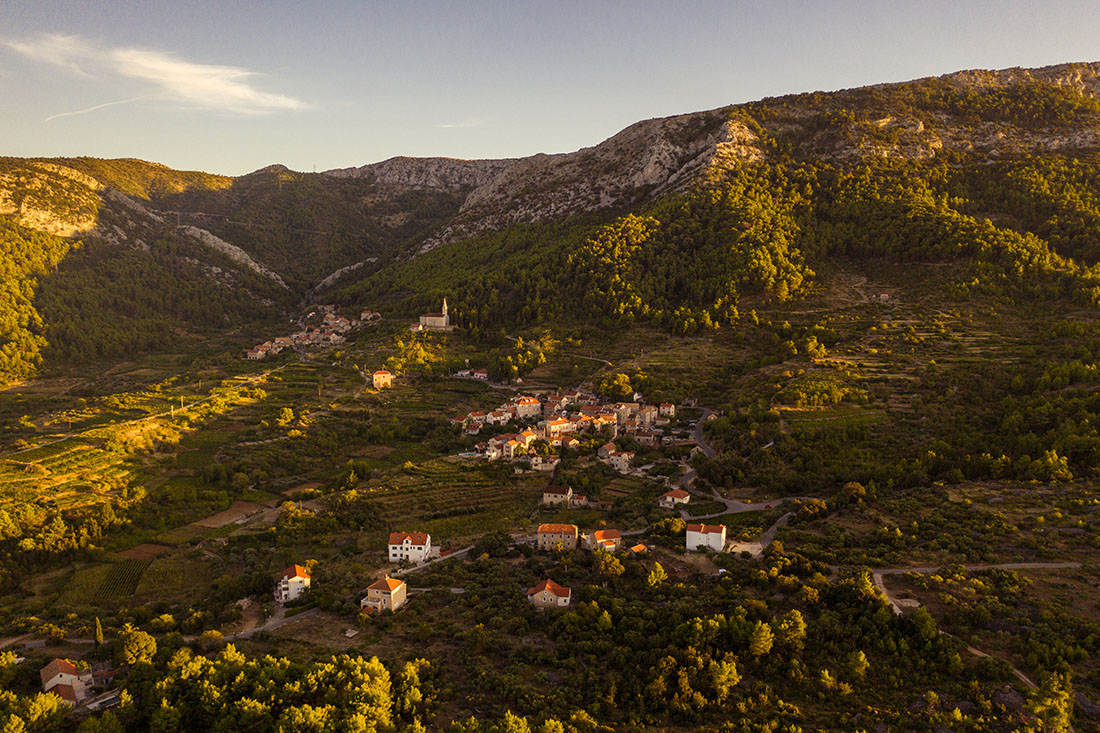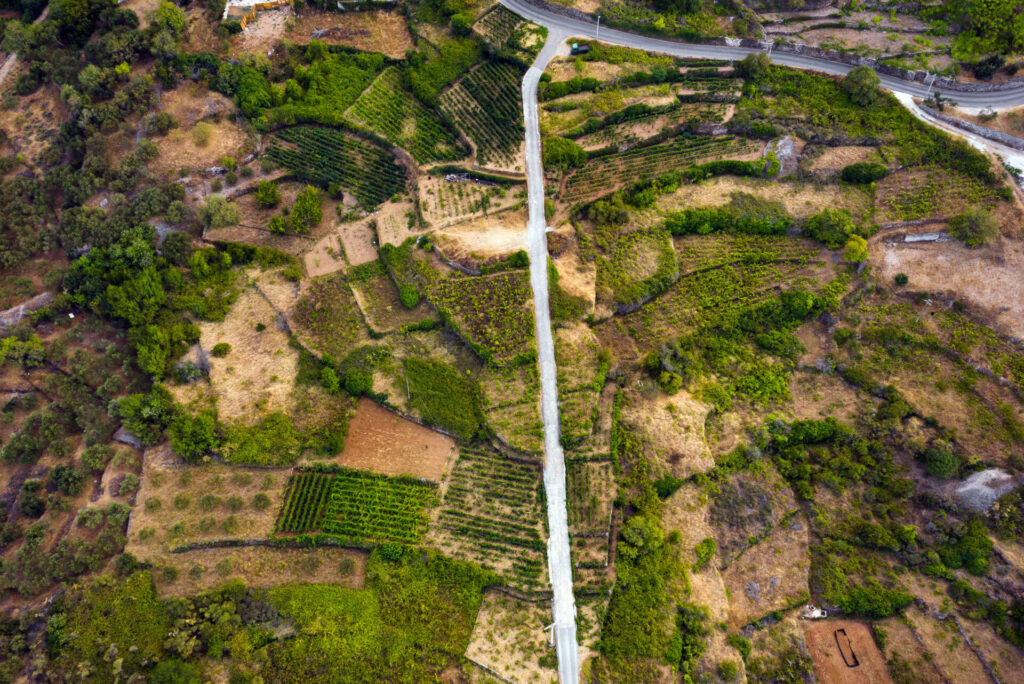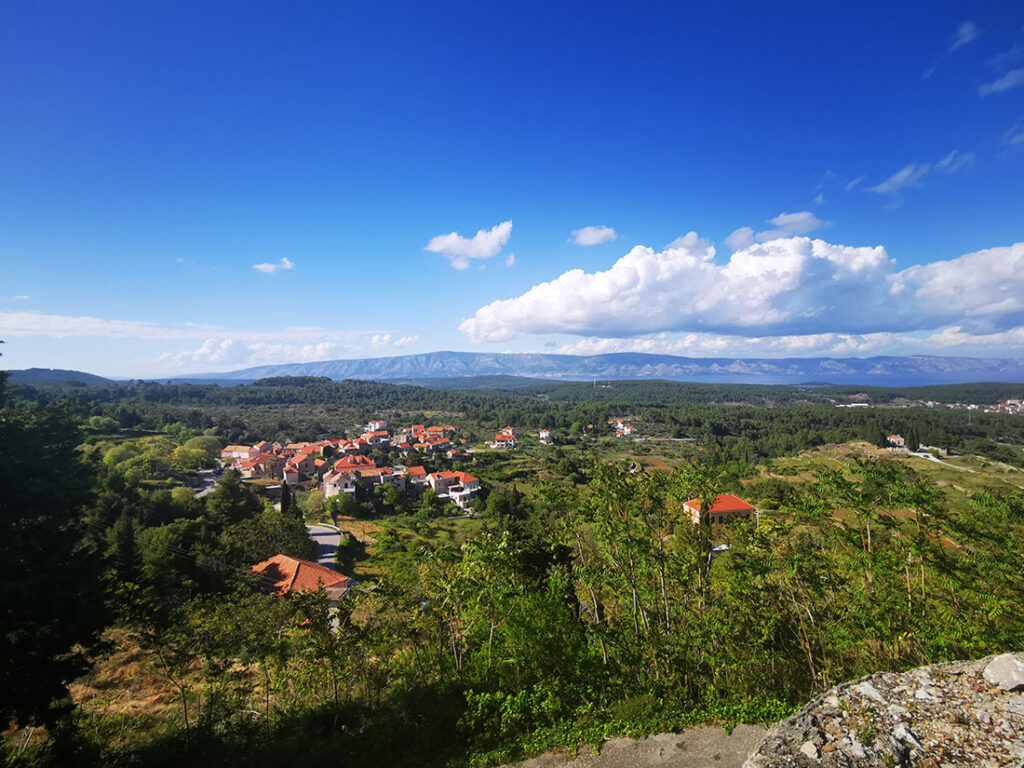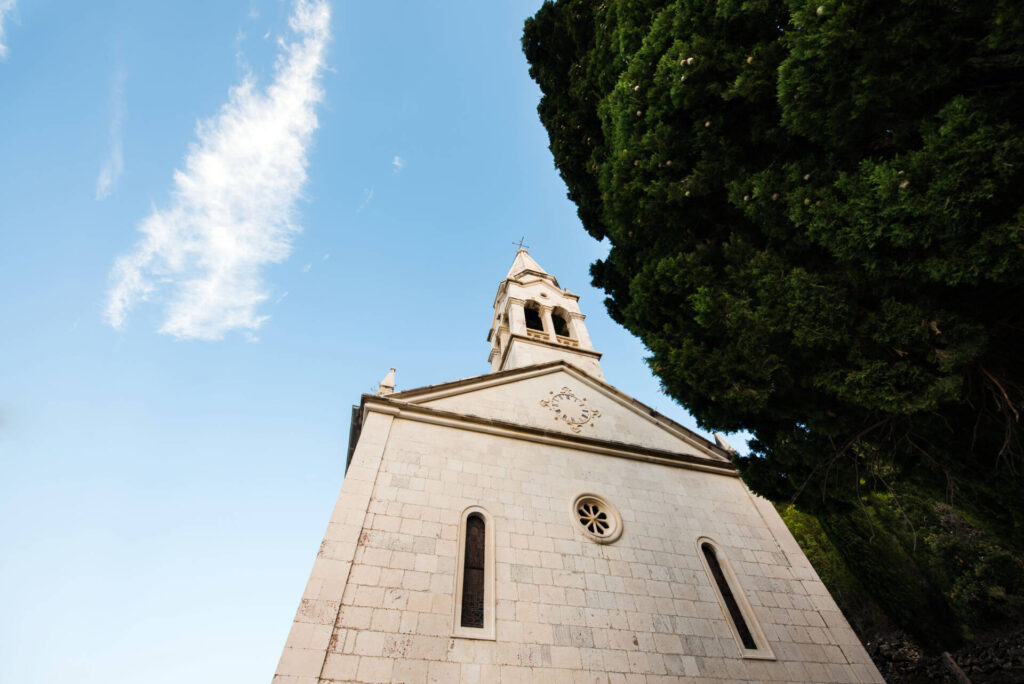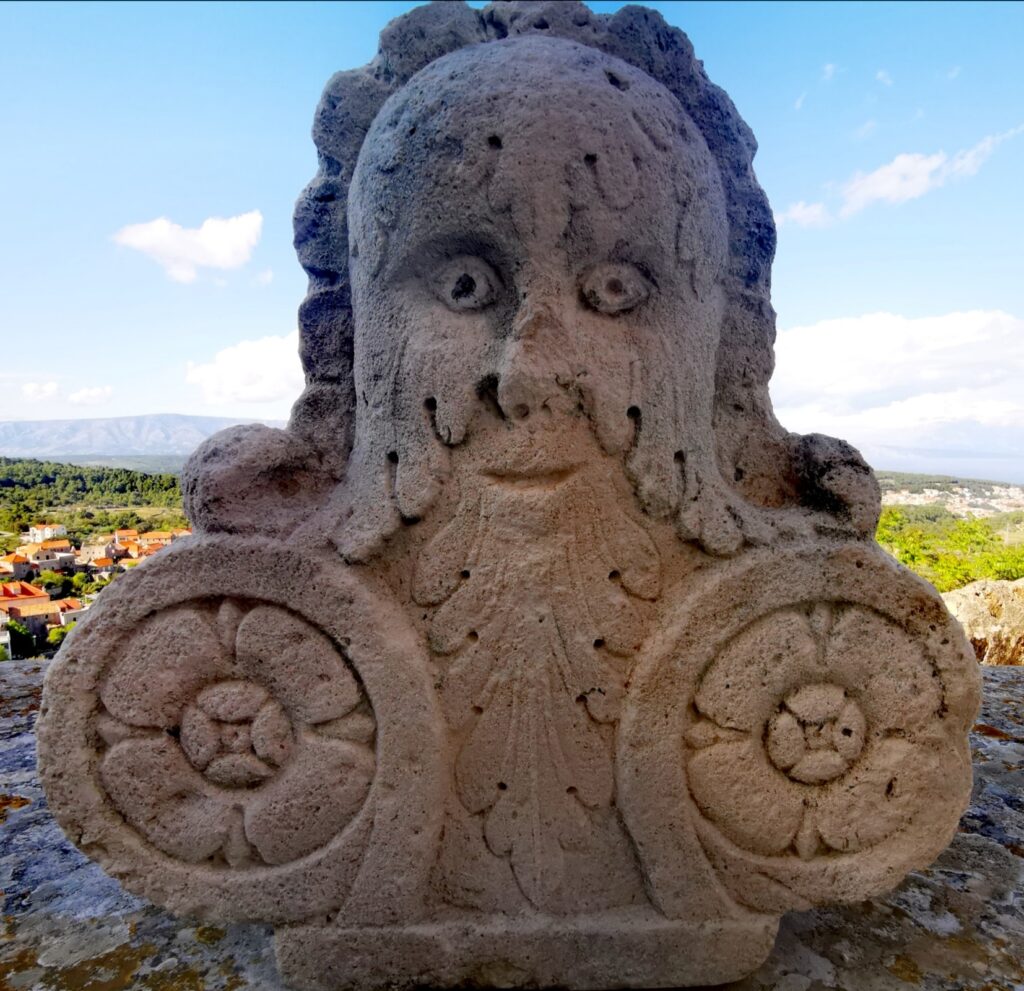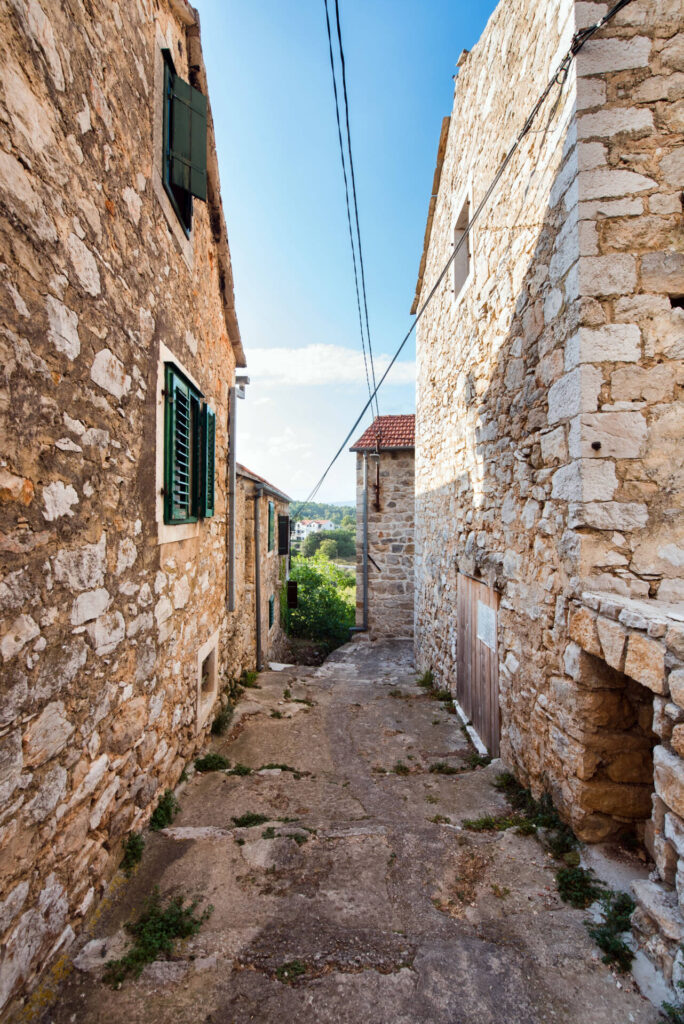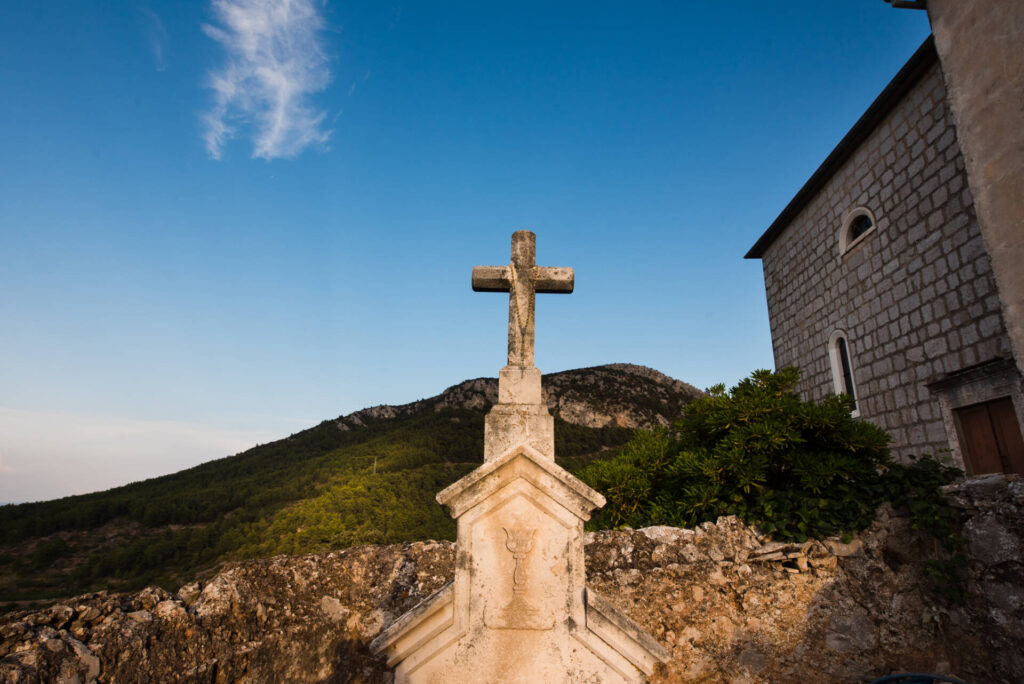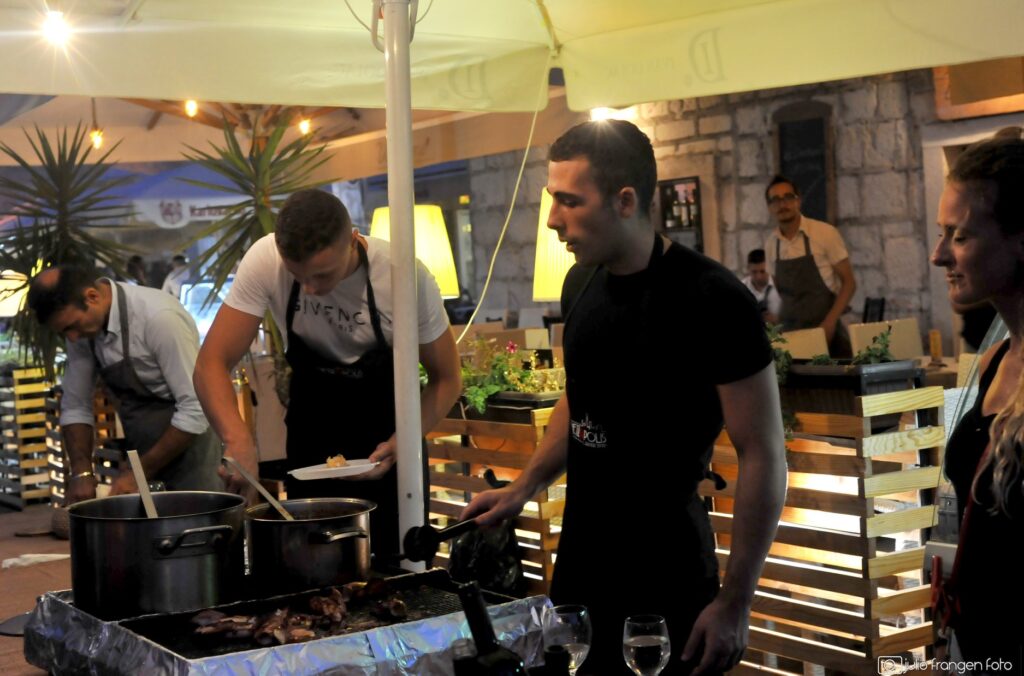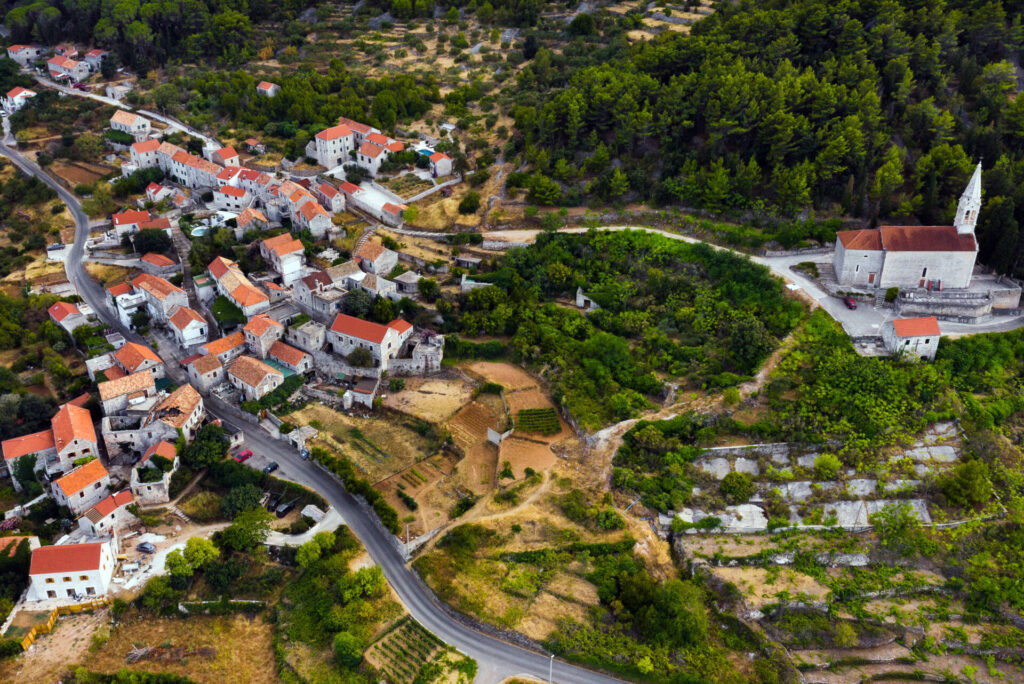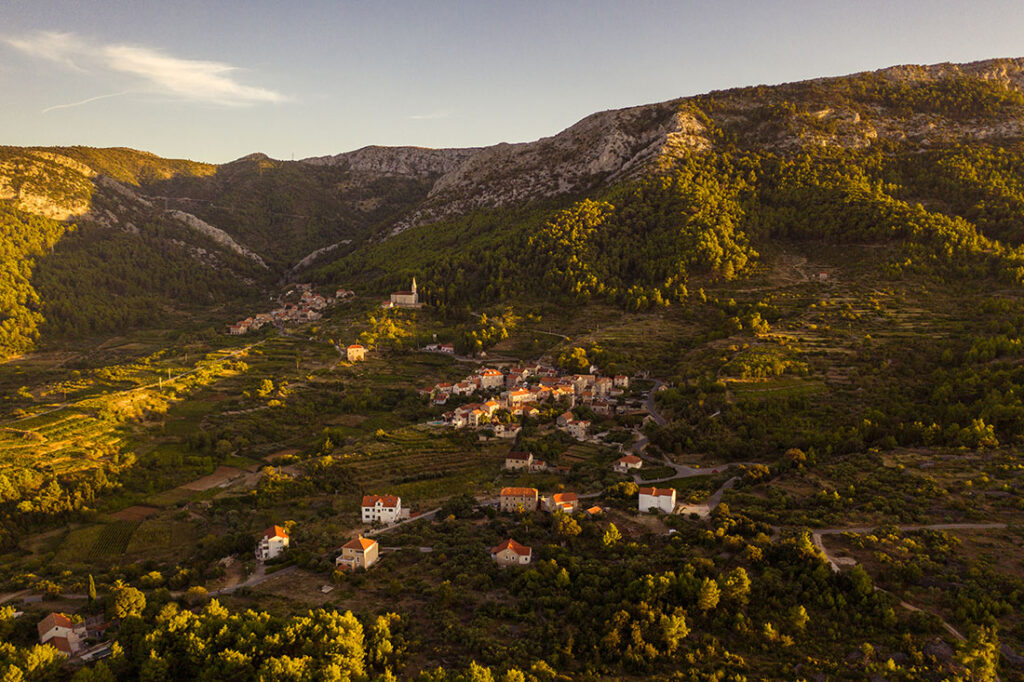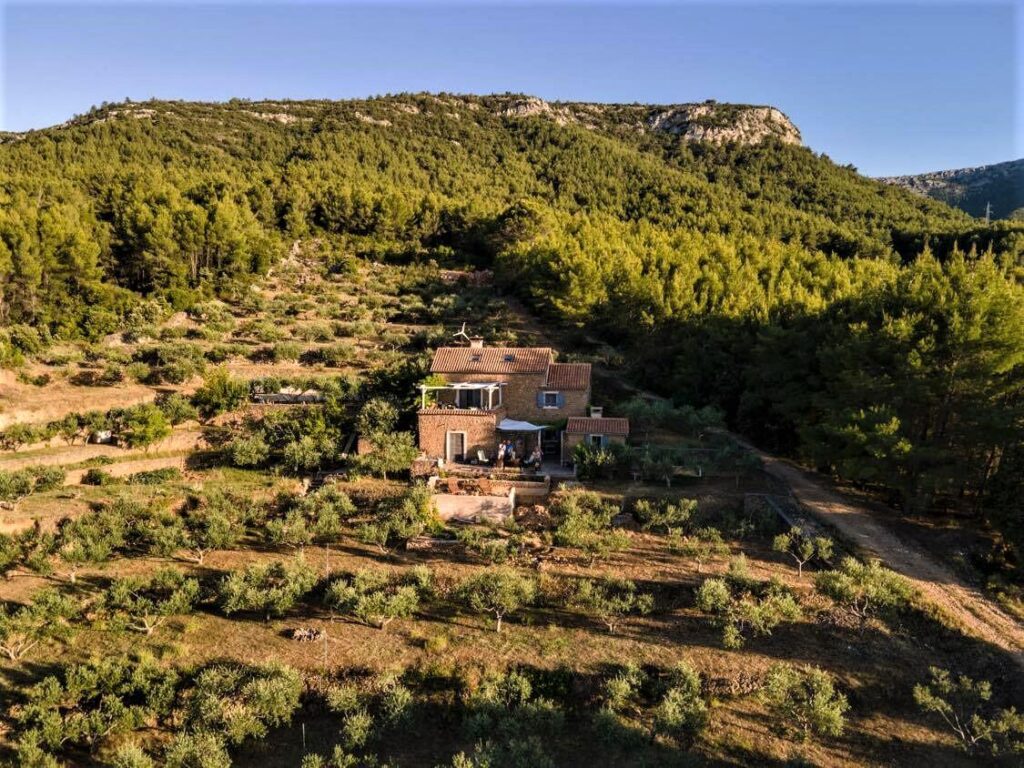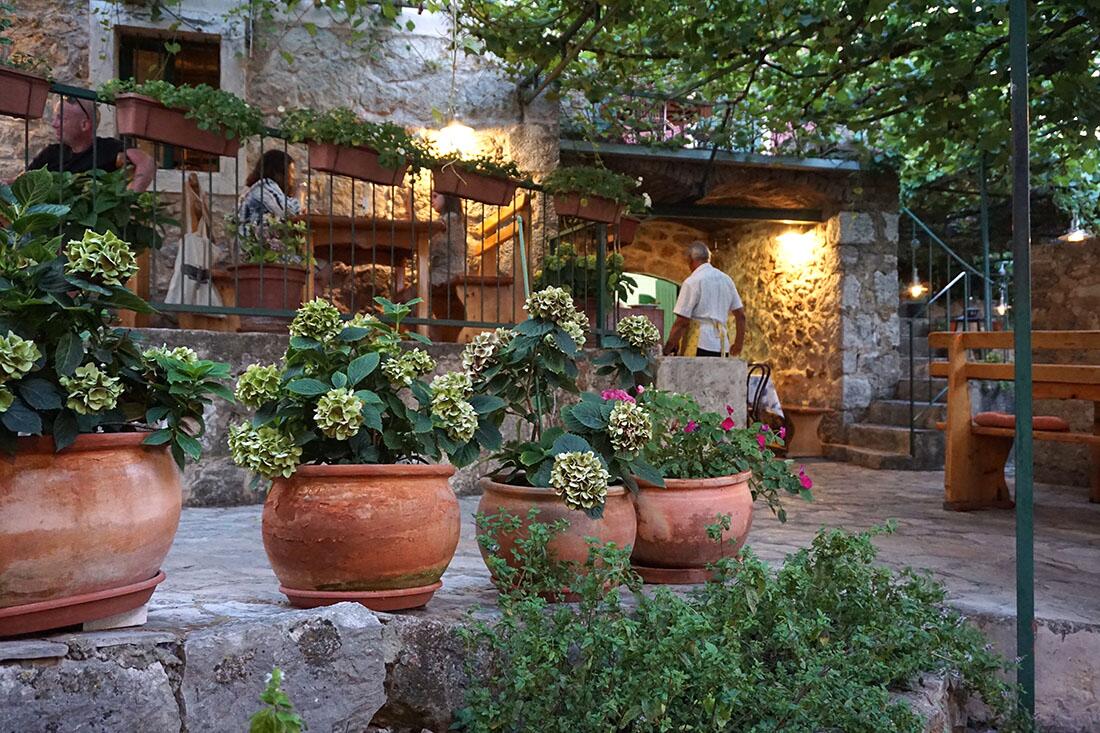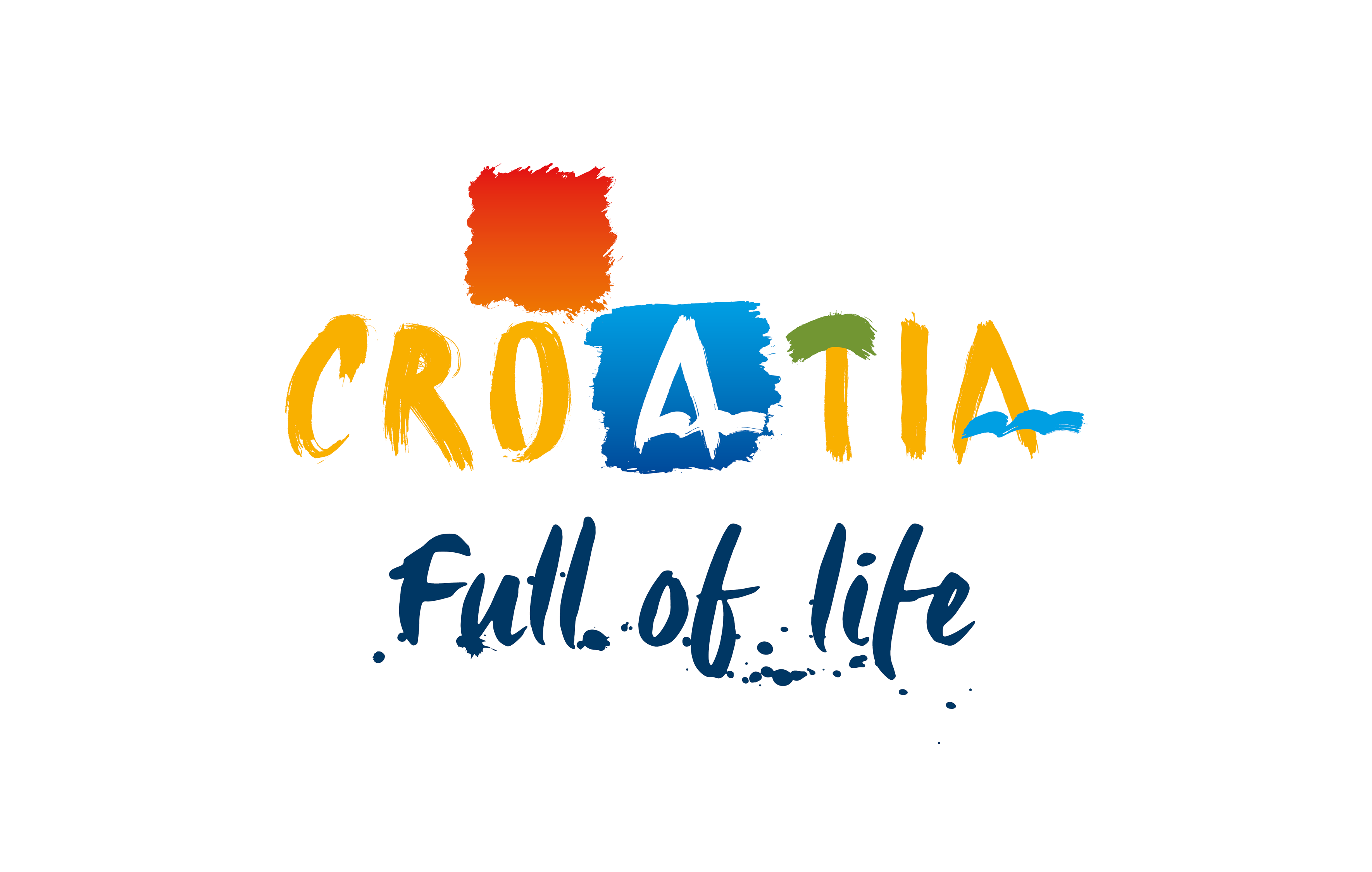Pitve and Dol are the oldest settlements on Hvar. Pitve is situated at the entrance to a gorge called Vratnik. The oldest part of the village, Gornje or Stare Pitve (Upper or Old Pitve), was protected within the natural defences provided by the canyon, and has survived from Illyrian times. The newer part, Donje or Nove Pitve (Lower or New Pitve), was founded by refugees from Bosnia in the 15th century, when it was named Ostrvica (‘Little Island’).
On a height between the two villages is St. James’ Church, which dates to the 19th century. In the churchyard there is a bust of Janus, the double-faced Roman god of entrances and exits. It was thought to be a Roman artefact, but more recent experts have pronounced it to be medieval, the more especially as no other Roman artefacts have been found in the vicinity.
By the road between the two parts of the village is a large imposing stone building, which was once the village school, and is now a museum. The Heritage Museum from Hvar Town had organized two exhibitions there, one demonstrating Hvar’s rich history in wine production and fishing, illustrated with many ethnographic items, and the other commemorating the local Freedom Fighters in the Second World War. However, the exhibitions were closed, the building fell into disrepair and then was almost totally destroyed by fire in 2012, when only the walls remained standing. The Croatian Ministry of Culture, as a temporary measure, declared the building a material national cultural asset, and provided financial support for its full restoration.
Once there was a distillery for producing lavender oil in the village, a reading room in the building opposite the old school, and a discotheque in Lower Pitve. Nowadays the two parts of Pitve are better known for their fine restaurant dining, and their peace and quiet.




